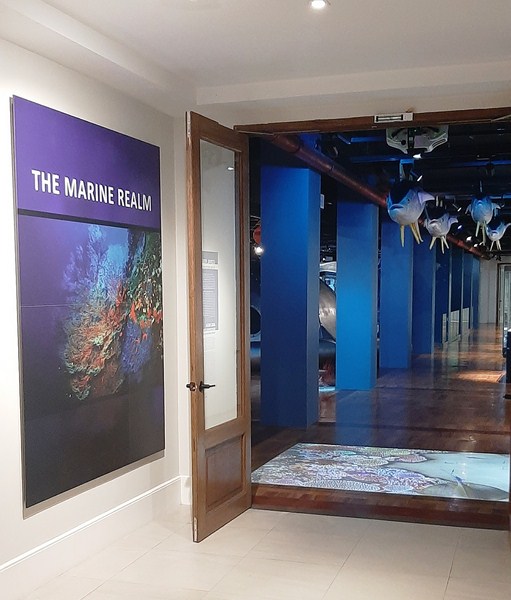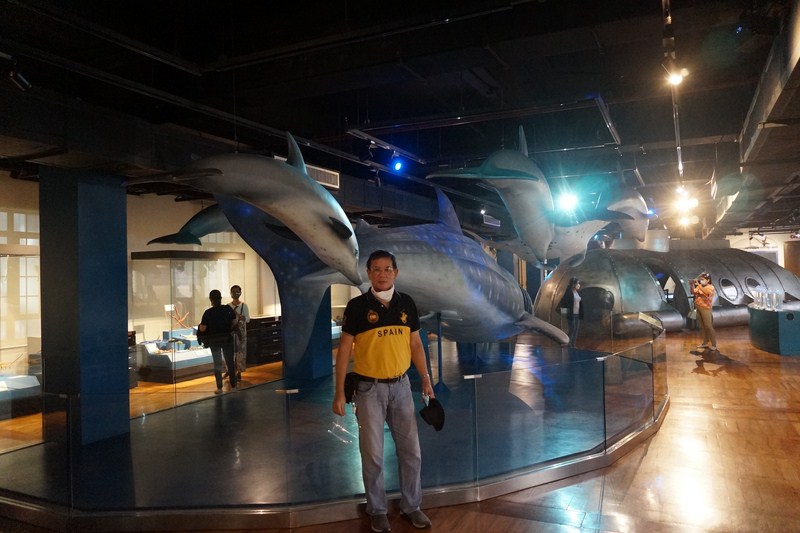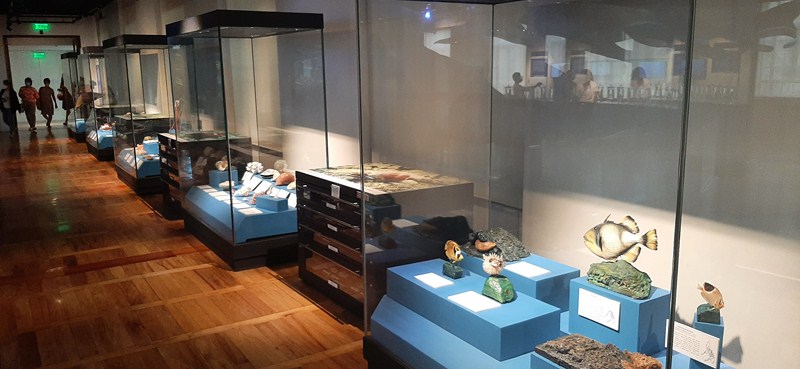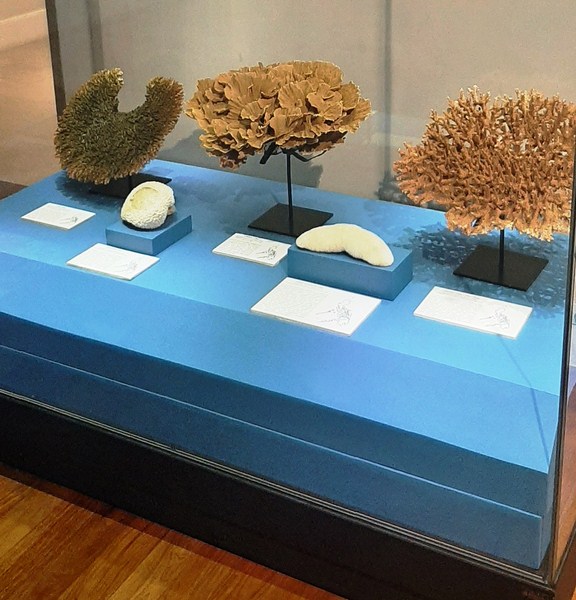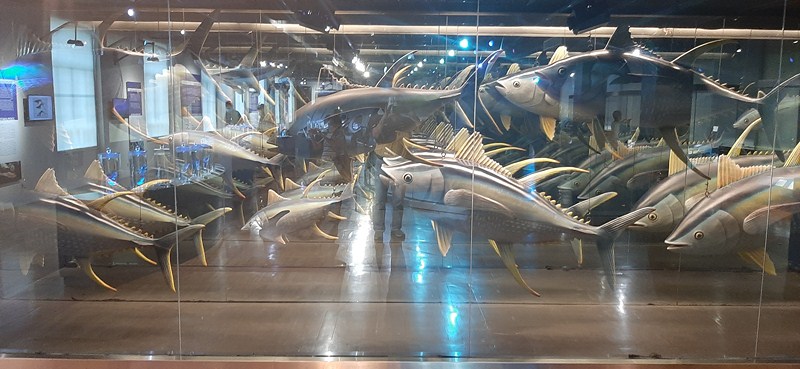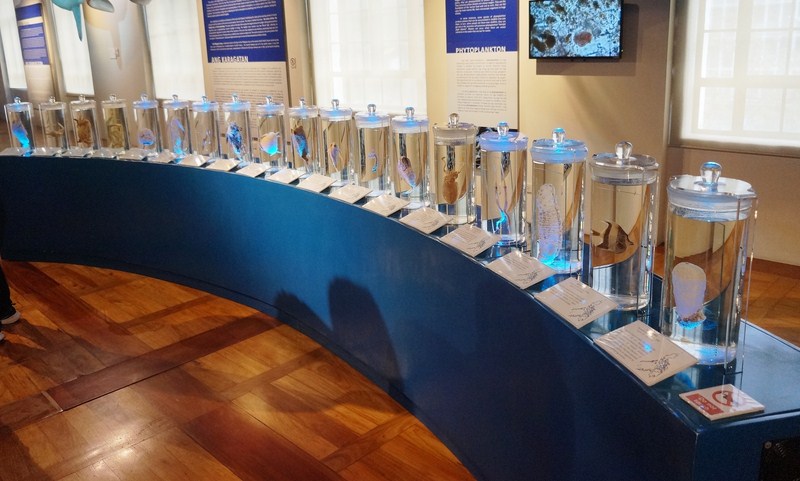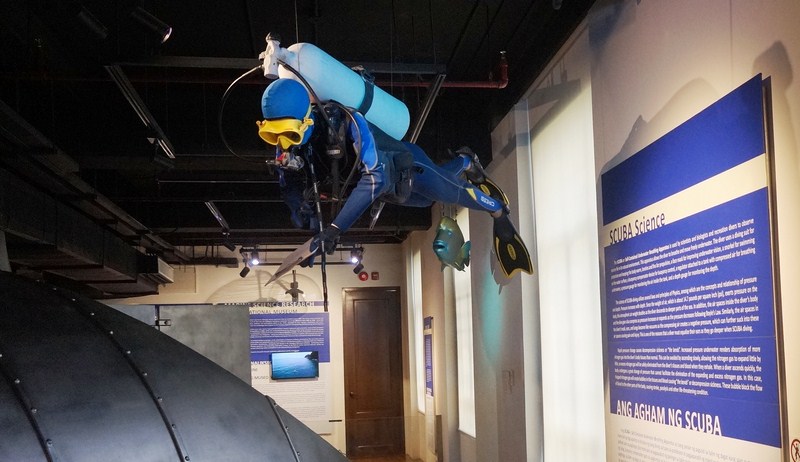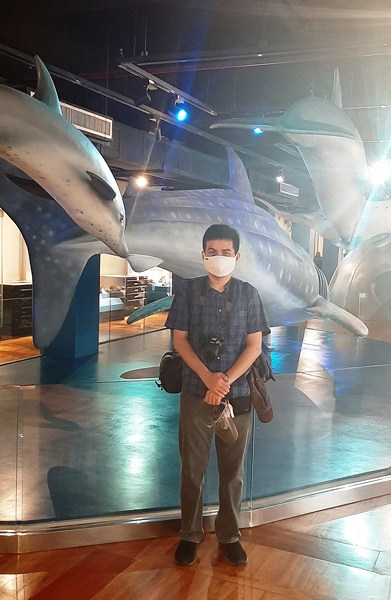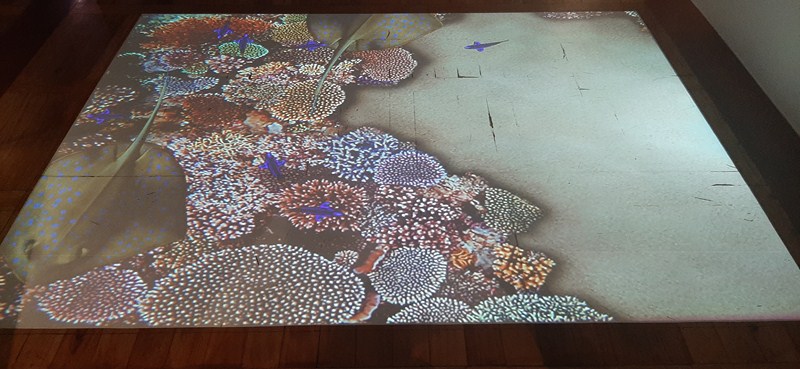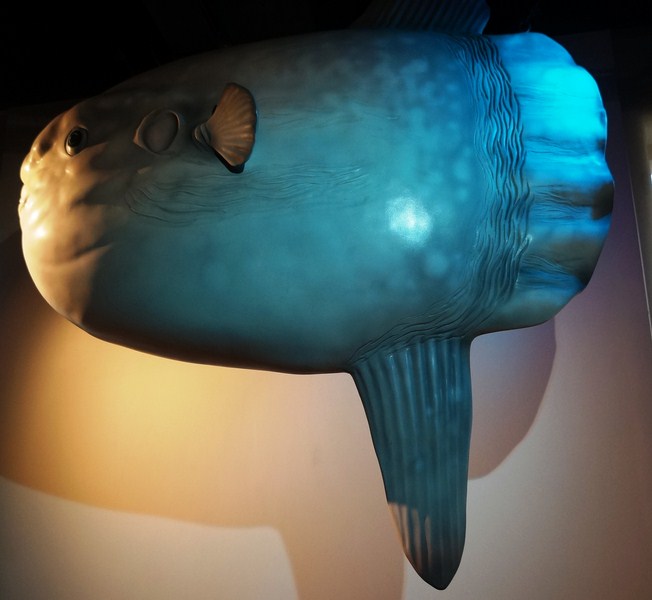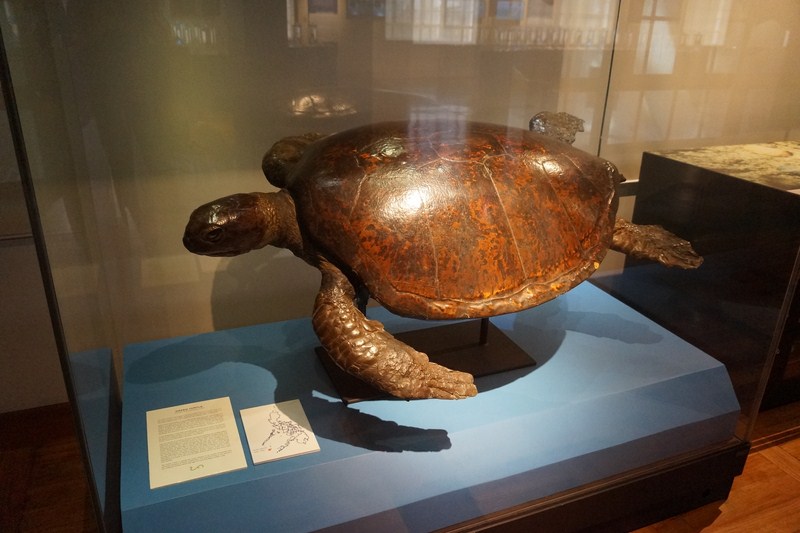Gallery X (The Marine Realm) of the National Museum of Natural History provides a closer look at underwater scenes. Here, visitors will virtually wade on the sandy-coral reef ,with stingrays and dories swimming around. As visitors wade through, the fishes will scatter away from them.
Check out “National Museum of Natural History”
On the left side of the “Interactive Fish Experience on Floor” is “Coral Diversity of the Philippines” which showcases different species of stony and fan corals displayed in glass cases, with general information about them described on the graphic panel beside the showcases.
A few steps away from the glass cases is a portion of a reef’s replica, with sample of iron mooring (a good mooring that should be practiced by fishermen and tourists who would want to snorkel or dive in coral reefs to avoid destroying the corals) permanently attached to the substrate displayed, from where a buoy is attached to the mooring as it goes up the surface and linked to a banca overhead.
Similarly, the banca above (suspended from the ceiling giving the impression that it is on the surface of the sea) shows the fish caught by the use of hook-and-line. Here, visitors learn about practices to make fishing sustainable as well as how important coral-dwelling species are for food.
Aware of the fragility of the coral reef, visitors will also learn about the threats to the corals as well as the organisms that thrive in the coral reef ecosystem. Hence, visitors will learn that there is collaboration of the government and the NGOs to conserve coral reef and to impose measures to protect them. A video explaining one of the scientific areas of study (i.e., marine research) is continuously shown.
A replica of a submarine, presenting an interactive underwater experience, invites visitors to consider which way their own actions will take the ocean in the future. The portholes or “windows” inside the submarine show various footage of different underwater, deep sea and reef views of sea creatures as one goes from the entrance, where shallow portions of the sea are displayed, and experience going down to depths of about 150 m. below the surface of the sea.
At the Open Sea portion of the gallery, visitors will have an opportunity to experience the large and small pelagic creatures in which life-sized casts of large fauna such as the whale shark (butanding), manta rays, schools of yellowfin tuna, stingray and bottlenose dolphins are lit by programmed moving lights that suggests the animals are moving.
Large glass jars, set on a continuous curved base and lit from below, displays waves of specimens.
The first wave presents shallow-water forms, the middle wave shows the pelagic specimens and the third wave shows the organisms occupying the deepest part of the sea.
Visitors will also learn that marine scientists often employed scuba diving in studying undersea marine flora and fauna. Seen overhead is a replica of a scuba diver while the science of scuba diving is explained on the graphic panel behind the replica diver.
Behind the wave of specimens are videos and graphic panels explaining and showing the different kinds of phytoplankton and zooplankton that form the base of the marine food web, making visitors realize that the oceans or the seas are filled with tiny organisms.
To make the experience more interesting, an interactive video of marine mammals as well as the organisms in different zones of the ocean are shown. Visitors will discover that ocean species, like land species, may be found only in particular zones of the sea.
At the far end of the gallery, beside the infinity mirror where school of tuna are seen, is the “Abyss” where visitors will learn the deep-sea creatures inhabiting the darkest part of the ocean.
The other side of the gallery are lined with more showcases and open storage drawers where the Fernando Dayrit’s collection of shells are in full view as well as the different fishes, echinoderms, crustaceans and a large green sea turtle are displayed.
Gallery X (The Marine Realm): Bloomberry South Exhibition Hall, 3/F, National Museum of Natural History: Agrifina Circle, Rizal Park, T.M. Kalaw cor. Gen. Luna Sts., Manila. Open Tuesdays – Sundays, 9 AM to 12 noon (cut off time is 11 AM) and 1 to 4 PM (cut off time is 3 PM). Tel: 82981100 local 3000 and 85277889. E-mail: cmvod@nationalmuseum.ph or inquiry@nationalmuseumph.gov.ph. Visitors shall be limited to 100 per museum per session. Visitors are required to pre-book online at https://reservation.nationalmuseum.gov at least a day before the visit. Confirmation of booking will be sent through email. Group reservations are limited to five (5) persons only. Walk-in visitors will NOT be accommodated. Coordinates: 14°34′59.9″N 120°58′55.9″E.

